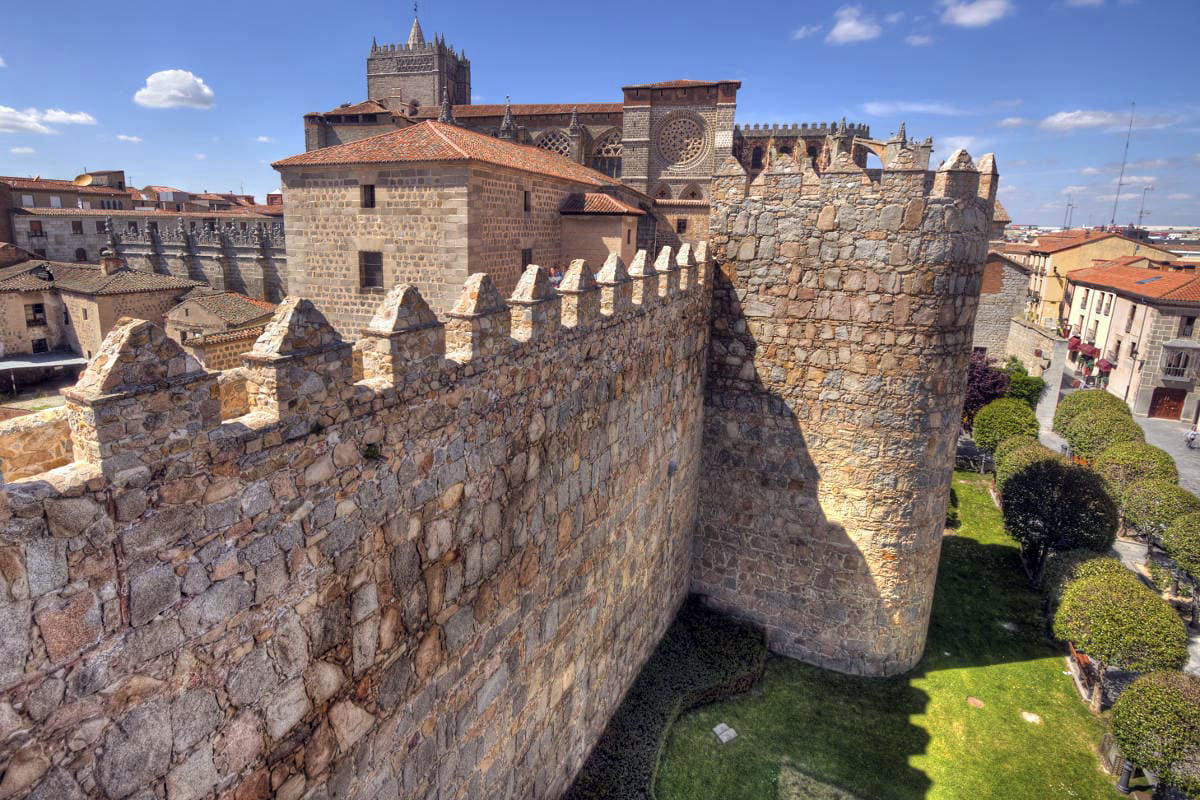

INTRODUCTION
In pre-Roman times (5th century BC), Ávila was inhabited by the Vettones, who called it Obila ("High Mountain") and built one of their strongest fortresses here. There are Bronze Age stone statues of boars (known as verracio) nearby. Gate Alcazar Ávila may have been the ancient town known as Abula, mentioned by Ptolemy in his Geographia (II 6, 60) as being located in the Iberian region of Bastetania. Abula is mentioned as one of the first towns in Hispania that was converted to Christianity by Secundus of Abula (San Segundo), however, Abula may alternatively have been the town of Abla. After the conquest by ancient Rome, the town was called Abila or Abela. The plan of the town remains typically Roman; rectangular in shape, with its two main streets (cardo and decumanus) intersecting at a forum in the centre. Roman remains that are embedded in town walls at the eastern and southern entrances (now the Alcazar and Rastro Gates) appear to have been ashlar altar stones.
By tradition, in the 1st century, Secundus, having travelled via the Roman province of Hispania Baetica, brought the Gospel to Avila, and was created its first bishop. After the fall of the Western Roman Empire, Ávila became a stronghold of the Visigoths. Conquered by the Arabs (who called it Ābila, آبلة), it was repeatedly attacked by the northern Iberian Christian kingdoms, becoming a virtually uninhabited no man's land. It was repopulated about 1088 following the definitive reconquest of the area by Raymond of Burgundy, son in law of Alfonso VI of León and Castile. He employed two foreigners, Casandro Romano and Florin de Pituenga, to construct a stone frontier town and creating the walls that still stand. The city achieved a period of prosperity under the Catholic Monarchs in the early 16th century, and their successors Charles V and Philip II of Spain, but began a long decline during the 17th century, reducing to just 4,000 inhabitants.
Let's discover this beautiful city more in depth with this audioguide.
PLACE OF INTEREST
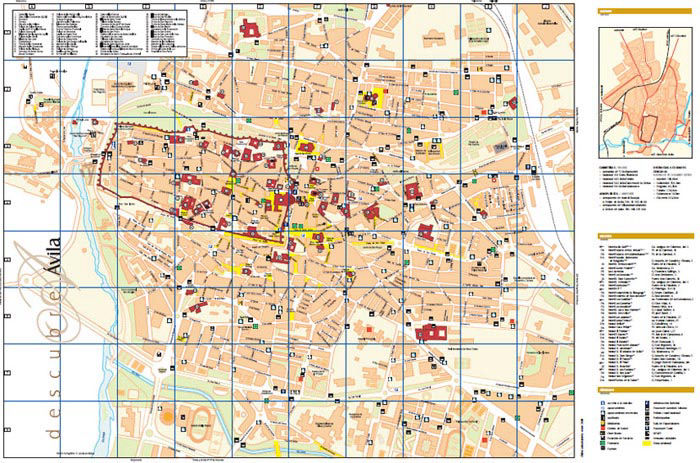
Click here to increase size
The Walls
Besides the archaeological evidence that suggests an original wall from the late-antiquity period (fifth century), set around a small area, the walls date from the Middle Ages. With a perimeter of 2516 m (around an area of 33 ha), 87 turrets, 9 gates and 2 small gates and 2500 merlons, the walls of Ávila are the best-conserved example of their kind in the world.
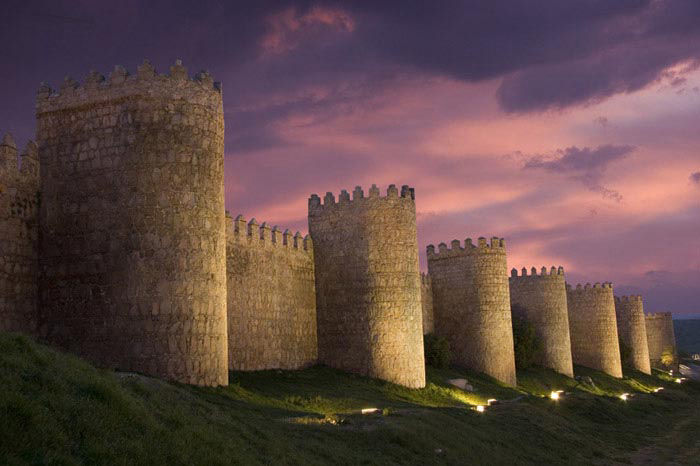
Palaces built on the interior formed a second line of defence against popular revolts and/or enemy attacks on the town. The date of their construction is a matter of controversy. Some authors suggest that, in keeping with tradition, they were built at the end of the 11th century, while others consider that most of the construction work took place during the second half of the 12th century-beginning of the 13th century, as is the case of neighbouring military constructions.
Built on rock foundations, the walls stand as a powerful defence construction made of granite masonry, filled with stone and mortar. It has an irregular quadrilateral shape that is almost a rectangle and positioned longitudinally from East to West. Its construction began on the most vulnerable side (the east), where there are no natural elements of defence, which is why it is the most robust and grandiose side of the walls. The walls have a thickness of 3 m and a height of 12 m. There is a semi-circular turret every 20 m, standing 8 m above the height of the walls and this side has the largest and most solid gates.
The gates on the north and west sides are less majestic and the turrets show signs of work by Mudejar builders (brickwork). The south side gives the impression of depletion and the size of the masonry work decreases. It has smaller semi-cylindrical towers set further apart and gives an overall sensation of reduced resistance and robustness.
The east side has a large amount of reused Roman materials (steles, altar stones, urns, cupae, cornices, animal statues and columns, etc.) thought to come from the dismantling of an early Roman necropolis that was once located in the area.
In the 16th century, it was still used for economic control and health safety purposes and reforms were carried out to repair the walls; however, after the danger of war had disappeared, the decision was taken to remove some of the additional defence items (barbicans, moats, etc.), which had become ineffective against the military machines used at the time.
Basílica San Vicente
Outside the walls, we now head on with the audioguide to the Basilica of San Vicente. It was built in Caleno granite in a way that was greatly conditioned by the lie of the land and in the place where tradition situates the martyrdom and burial of Vincent, Sabina and Cristeta. It is the prime model of the Romanesque style in Ávila and its measured proportions make it a unique example of the Hispanic Romanesque style. With its outside influences and the influence of the cathedral construction, it is also the propagator of the style in the town. It has a Latin-cross layout with three six-section naves and one transept. Interestingly, it also has a Gothic clerestory on the side naves. The narrow upper end, with its three apses, stands on a liturgical funeral crypt.
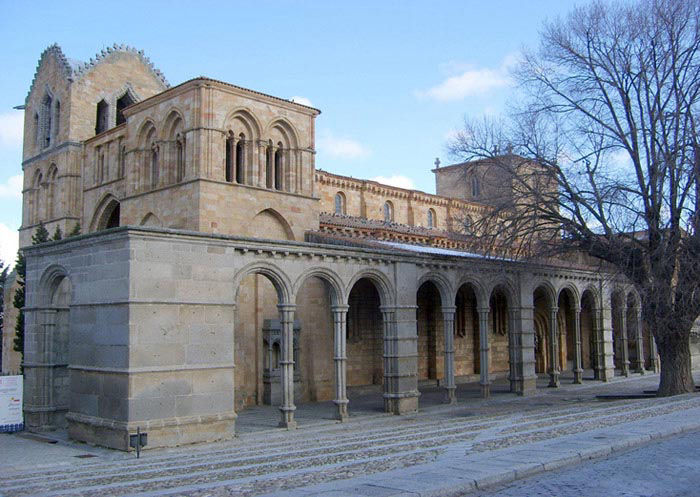
Its construction began around 1120 with the building of the main body up to the west entrance; the towers and narthex of the entrance were built between 1150 and 1170 and the side naves were closed off with depressed quarter-barrel vaults; a ribbed vault was built above the central nave in Gothic style. The apse was covered with an octagonal vault halfway through the 13th century. The storiated capitals of the main chapel, the cenotaph of the saints (by Fruchel and dating from the mid-12th century), showing the arrest, sentencing and martyrdom of Saints Vincent, Sabina and Cristeta, the west porch and the southern cornice stand as the best examples of Romanesque sculpture in the church and also in the town.
The porticoed gallery was built on the south front in the 15th century. San Vicente was the first Spanish building to be restored in historicist style, with work by Hernández Callejo, Vicente Miranda and, above all, Repullés y Vargas from the mid-19th century to the first quarter of the 20th century. The crypt boasts a statue of the Madonna of La Soterraña (15th century), which was venerated by St Teresa of Jesus. It was designated a National Monument in 1923.
San Andrés
This church you can see with the audioguide was built in the quarter of Ajates (a suburb of mediaeval origin in which the main trade was masonry) in the second quarter of the 12th century. It was made in Caleno granite (very typical of the Romanesque style in the town) and is set according to liturgical criteria with an upper end with three apses that correspond to the three naves in the interior; it does not have a transept nave. The protruding central apse is of particular interest thanks to the number of figures and capitals and the closed arches on the straight section of the upper end, which stand as a unique example of Romanesque capitals. The variety of icons on the interior and exterior capitals is the largest of all of Ávila's Romanesque buildings and is associated with the Masters of León. The central apse has two absidioles of a smaller size and a plainer composition.
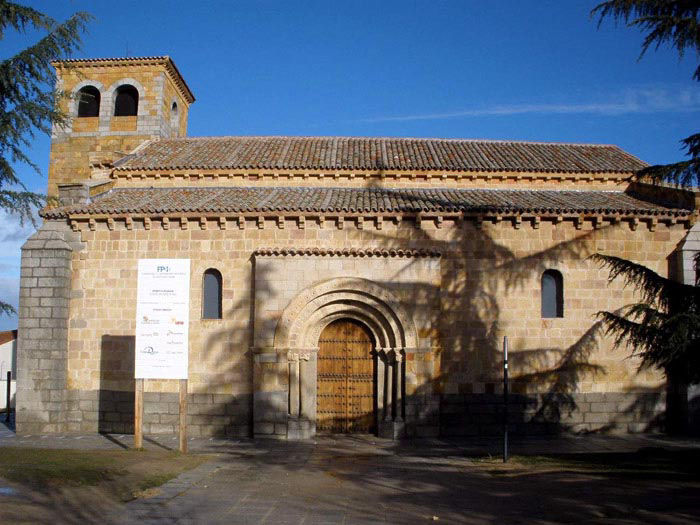
The upper end is covered with decreasing stepped vaults: barrel vaults along the straight section and calotte vaults along the curved section. The southern absidiole has a lobulated arch used as the entrance and unparalleled in any other church in Ávila at the time. The south front has a semi-circular window and the keystone of the semi-circular archivolt contains a Chi Rho which, fitted in the 13th century, is considered as the first of its kind in the town. The tower stands next to the western side, built onto the nave during or after the 14th century. It was designated a National Monument in 1923.
San Martín
Built outside the walls to the north of the walled enclosure, it is of Roman origin, as confirmed by the latest archaeological explorations. After the Roman building had been apparently ruined, it was rebuilt and radically transformed in the 16th century and at the beginning of the 18th century. In the 14th century, the tower was built on a base made of granite ashlar work and an upper body made of brick. It also stands as a belfry of Gothic tradition and shows evidence of the Mudejar Masters. Worth mentionning in this audioguide, the pointed openings are of particular interest and are made of decreasing horseshoe archivolts set in a panel.
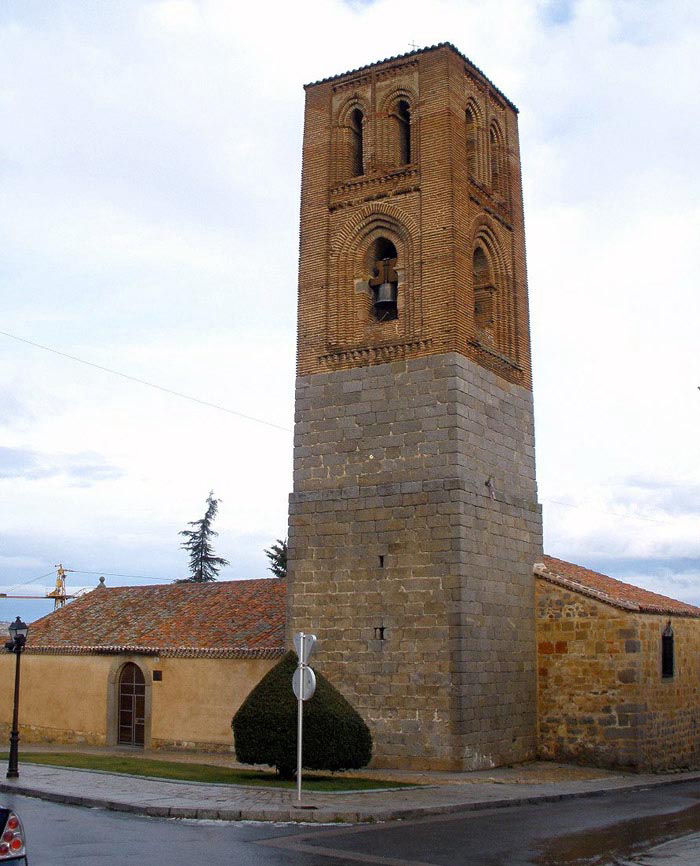
In the 16th century, the layout was completed and structured into three naves separated by semi-circular arches. In the 18th century, the Main Chapel was refurbished and the side chapel and semi-spherical cupola above the Presbytery were built. Two Roman altar stones were reused in the south wall. It was designated a National Monument in 1983. The audioguide continues in the next section.
Santa María de la Cabeza
Built outside the walls to the north of the town, it was consecrated in 1210 and is the last example of the Romanesque style in Ávila. Its upper end was begun in Romanesque style and was followed by the construction of the naves in unquestionable Mudejar style. The three apses, which open into three naves, were built in granite on the outside and finished off with a small, plain cornice in Caleno granite.
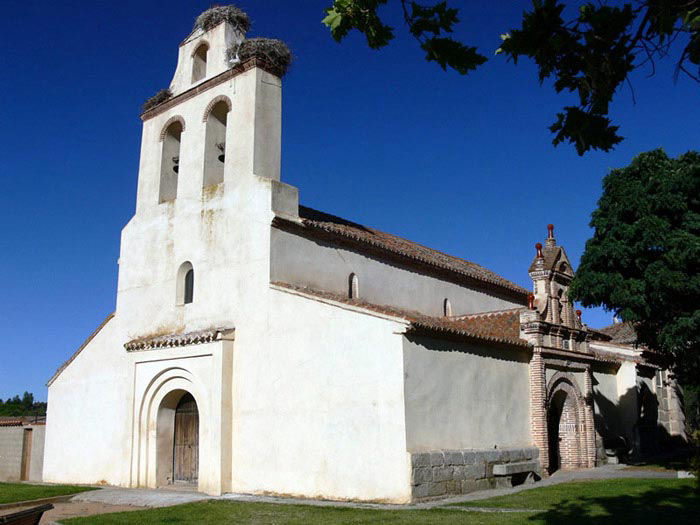
The three-nave body with double formerets in brick, the arches in the chapels in the apses and the distribution of the south front point to a later date and to the Mudejar tradition. The south front is finished off with a small steeple and a triangular front with a niche containing the statue of the Madonna of La Cabeza. The west entrance was crowned with a solid-built steeple in 1708. The sculptures that decorate the fascias in the presbytery are characterised by plaits with diamond-shaped tips and reveal the influence of traditional Islamic motifs. In 1834, the municipal cemetery was moved to this area of the town and the church was used as a chapel. It was later downgraded to a shrine when the cemetery was moved to its current location in the 20th century.
San Pedro
Residing over Plaza del Mercado Grande, its projection is similar to that of the Basilica of San Vicente. The monarchs swore their respect for the charters of Castile in the atrium of the church, which underlines its importance during the period in which the town achieved its greatest relevance in the world of politics. It has a Latin-cross layout with a central nave that is larger than the side naves. Its construction began in the second quarter of the 12th century and was completed in the 13th century after a period in which the work was stopped. The architecture and decoration shows an evolution of particular interest as a result of the delays in the construction work.
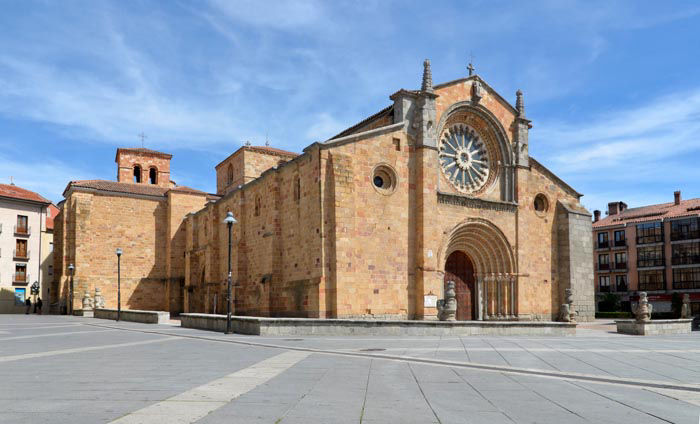
It has a triple upper end with an apse on each nave and a magnificent collection of sculptures showing plant, animal and geometric motifs and scenes from the Bible. The ceilings were covered with barrel and groined vaults in the 13th century. Over time, the arches became forerunners to those used in the Gothic period. Finally, a tower was built on the place where the central nave intersects with the transept. The main front has two bodies: the upper body is dominated by a large rose window and the lower body has a porch in which the size of the entrance is magnified by six plain archivolts. The southern porch is similar but smaller in size. The northern entrance is more ornamental and moulded with five archivolts, two of which are decorated with typical Ávila-style rosettes.
The interior stands out thanks to the panels distributed around the walls of the nave, the Renaissance-style altars and the altarpiece in the main chapel, together with its grilles. It was designated a National Monument in 1914.
Church of The Magdalena
Built in late Romanesque style at the end of the 12th century, this church we can visit with the audioguide stands outside the walls opposite the keep. It now belongs to the Franciscan Nuns of the Conception. Positioned in accordance with liturgy and built in Caleno granite, it has conserved the west and north entrances and apse from the original church. Interestingly, the apse has two levels with their corresponding animal-form corbels. The west front is of particular interest, with its decreasing semi-circular arch and five archivolts set on columns whose capitals are decorated with leaves, cockerels and other birds. A Baroque-style steeple stands to the west of the building. The interior has three naves separated by large, robust lowered formerets from the 16th century.
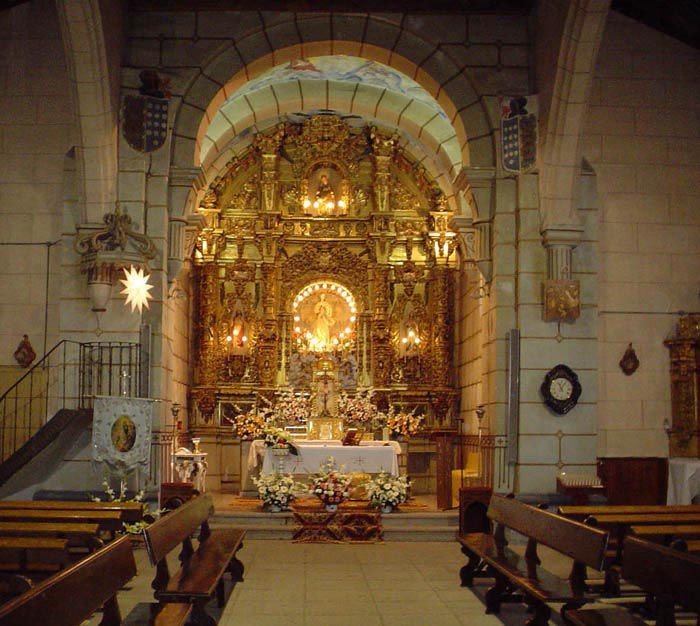
Santo Tomé el Viejo
Next stop of the audioguide, this church was built outside the walls in the mid-12th century opposite the Gate of El Peso de la Harina (which was opened up in the 16th century when the Gate of El Obispo was closed). Built in Caleno granite, besides some of its interior elements, it conserves the 12th-century east and south entrances, with their semi-circular arches and archivolts set on columns on the west porch and on the fascia of the capitals to the south; they boast a declaration made up of figurative, plant and geometric motifs. In 1520, the apses were removed from the upper end, together with the arches that separated the naves (replaced by columns forming two large arches on each side) and the layout was reduced to one rectangular nave.
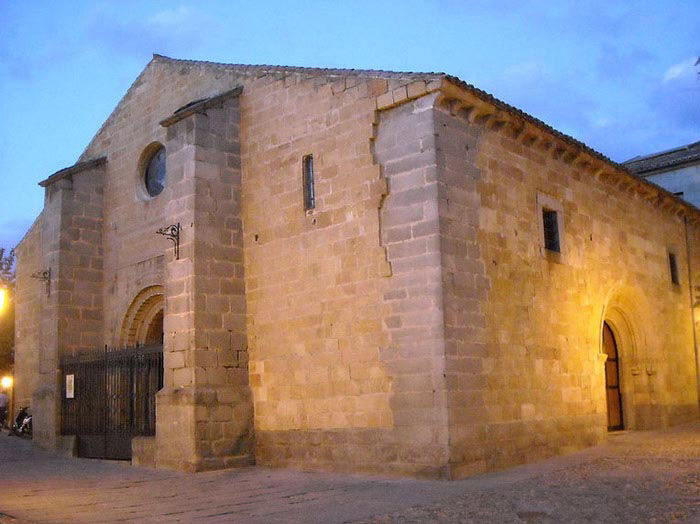
Besides its function as a church, this Romanesque building has had many uses. After the sale of church land ordered by Mendizábal, it became a private building and was used as a garage and petrol station until 1960, when it was acquired by the State. It was designated a National Monument in 1963. It is currently an annex of the Provincial Museum and is used as a storage area for stone archaeological items; it is also open to the general public.
San Segundo
Situated on the banks of the River Adaja, this church was built in Caleno granite between 1130 and 1160. Before it was dedicated to St Segundo after the remains of the town's first Bishop were found in 1519, it had been dedicated to St Sebastian and St Lucia. The Bishop's remains were moved in 1615 with great pomp and ceremony to the chapel of St Segundo, which was built on to the apse of the Cathedral specifically as a final resting place. The layout draws inspiration from the basilica style and has three naves and an upper end with three apses closed off with calotte and barrel vaults. Its slightly off-centre north-eastern orientation is probably due to the existence of an earlier church or an error made when the construction was being marked out. The southern porch has five archivolts set on columns and there are others of similar characteristics to the North and West, which were replaced in the 16th century. The structure of the naves was replaced in 1521 with a structure that shows Mudejar-style influences. Its current appearance is the result of refurbishment work that was carried out as from the 16th century.
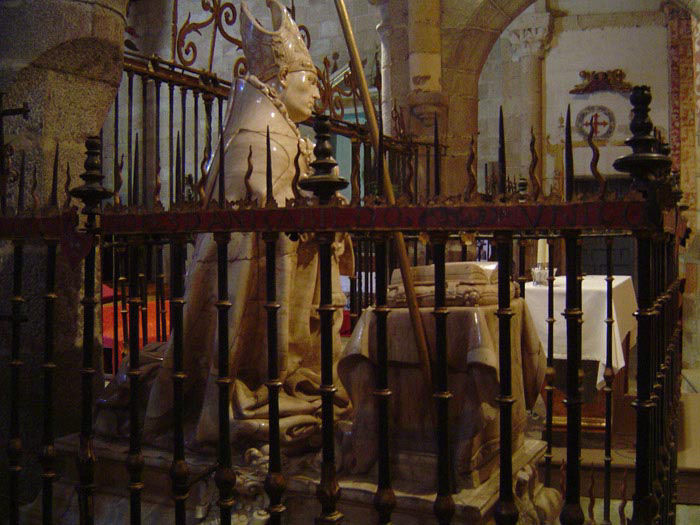
The decoration with Romanesque sculptures is limited to a number of capitals with plant and figurative motifs. Inside, it boasts a sculpture of St Segundo in prayer by Juan de Juni. With the audioguide you can find a Roman altar stone opposite the west entrance that was found during recent archaeological work on the church. It was designated a National Monument in 1923.
San Esteban
Built in the mid-12th century, it is the only Romanesque church that has been conserved inside the walls. Constructed in Caleno granite, the building we see today conserves the imposing apse from its original structure, the northern enclosure and the materials that were reused in the 16th century for its reconstruction. The front is based on an archivolt decorated with four-petal rosettes and it stands as a reinterpretation of the original front that was taken down. The apse is broken only by two small columns and the corbels of the eaves; the decoration follows the Cantabrian Romanesque style.
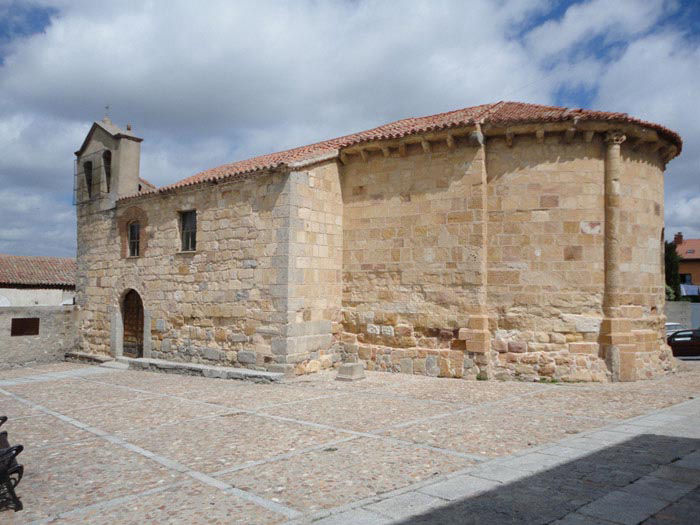
Inside, despite the small size, it has three naves, with very narrow side sections, possibly adapted from an area that was originally designed as unique. One of its most interesting features are the capitals that support the vault above the upper end: they are decorated with plant, animal and anthropomorphic motifs in pure Romanesque style. The interior boasts the steps to the pulpit, made in one single piece of granite and decorated with waves that are reminiscent of its Visigothic connection. It was designated a National Monument in 1923.
San Nicolás
This church you can visit with the audioguide stands in the suburb of the same name outside the walls, a mediaeval quarter inhabited by Christians and dedicated to agriculture and sheep farming. It also had a large number of Mudejar residents. It was built in Caleno granite in the late-Romanesque style of Ávila between the second half of the 12th century and the beginning of the 13th. The upper end and porches remain from the original construction. The three entrances take the form of semi-circular arches with archivolts. The northern entrance is the most ornamental and is decorated with wedges, palmettes and ivy leaves, which are very typical motifs on Romanesque churches in Zamora. The capitals of the archivolts have plant motifs.
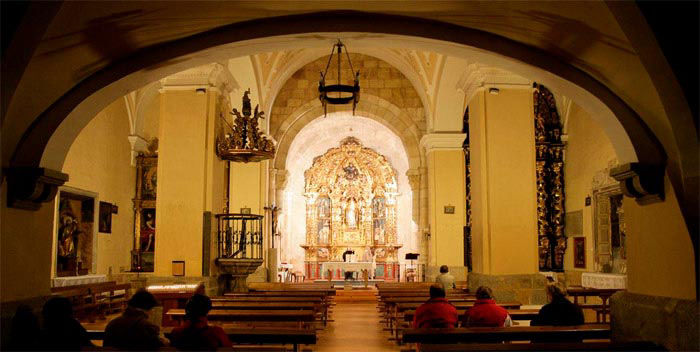
The tower is built on to the upper end from the North. It is divided into three bodies and shows two periods of construction. A Vetton animal sculpture was reused for the plinth. It has three naves: the central nave opens into a large apse and the side naves into rectangular chapels. Except for the upper end, the temple was covered with Baroque-style plasterwork in the 17th century. It was designated a National Monument in 1980.
Convent of Santa Teresa
We head on now with the audioguide to the convent of Santa Teresa. The church was built on the house in which Teresa de Cepeda y Ahumada was born and is part of the Carmelite convent. Underground, the large vaulted burial crypt, which is currently used as the Museum of St Teresa, is the only example of its kind in Spanish religious architecture. The work was directed by the Carmelite architect Fray Alonso de San José and began in 1629. The building was opened on 15 October 1636. In the purest Carmelite Baroque style, the church has a Latin-cross layout with a central nave and four chapels on each side. With the main altar in the northwest, it does not keep to established liturgical orientation as the presbytery was built to coincide with the room in which Teresa of Jesus was born. The entrance to the chapel of St Teresa opens up on the right arm of the transept and coincides with the area in which her family home once stood, together with the 'small garden where the saint prayed' opposite.
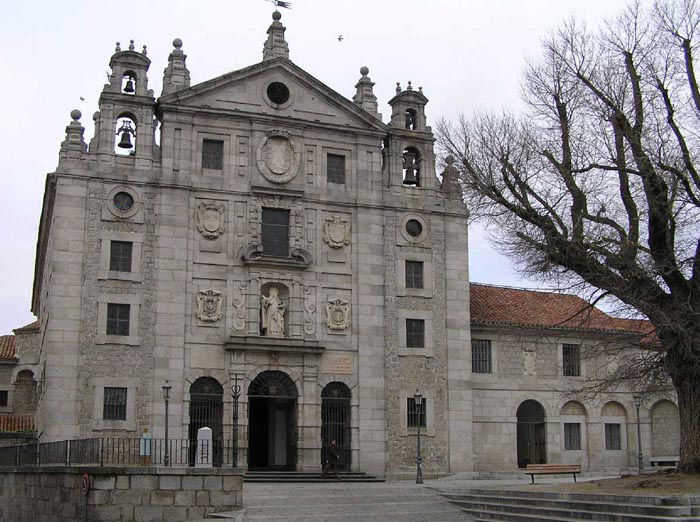
The front, which was designed in the style of an altarpiece, is separated into three bodies, giving prominence to the marble statue of the saint and the coats of arms of the Cepeda and Ahumada families, the Order of the Barefoot Carmelites, that of the Duke of Olivares, that of the Governor and that of Doctor of the Church. Inside, the sculptures by Gregorio Fernández (17th century) and his school are worth mentionning in this audioguide. The plaza is also home to a room containing relics and remains and a small souvenir shop. In 1886, the church and convent were designated a Historical Monument.
Church of San Juan
This church is of Romanesque origin and was completely refurbished in Gothic style with unquestionable Renaissance influences at the beginning of the 16th century. The north front has an outstanding brick tower that was raised at the end of the 17th century. The main front follows the usual late-Gothic style and is separated by archivolts decorated with spheres and flowers, which are very typical in Ávila. The large central nave is covered with a star-shaped groined vault; there are chapels built in later styles on each side with details that correspond to the Herrerian style of architecture.
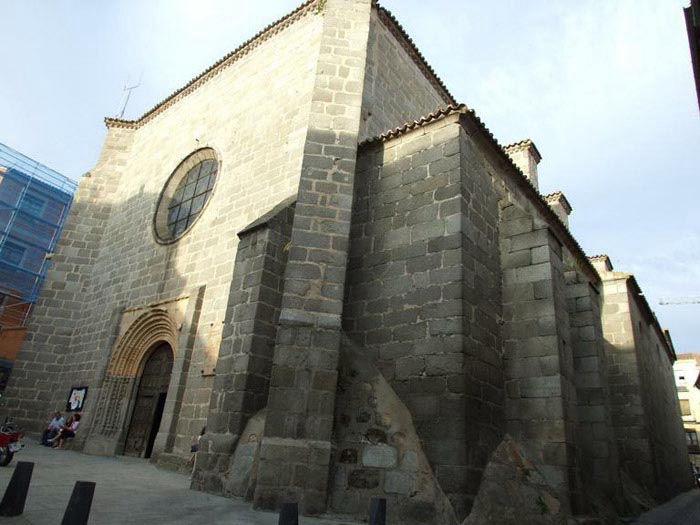
Its importance during the Middle Ages can be seen in the fact that the leading lineages of Ávila preferred this parish church and in the fact that the atrium, which faced what is today the Mercado Chico, was used as the meeting place for the town's council. On 4 April 1515, Teresa de Cepeda y Ahumada was baptised in the Gothic font (15th century) of the church, which can still be seen today with the audioguide. It was designated a National Monument in 1983.
The Four Posts
Besides the archaeological evidence that suggests an original wall from the late-antiquity period (fifth century), set around a small area, the walls date from the Middle Ages. With a perimeter of 2516 m (around an area of 33 ha), 87 turrets, 9 gates and 2 small gates and 2500 merlons, the walls of Ávila are the best-conserved example of their kind in the world. Palaces built on the interior formed a second line of defence against popular revolts and/or enemy attacks on the town.
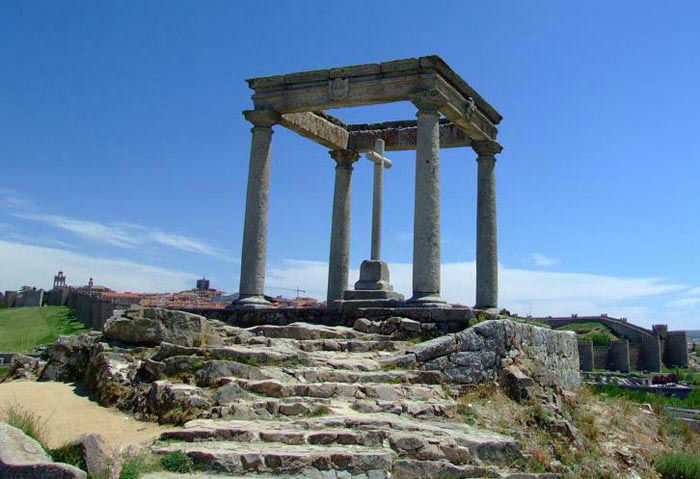
The date of their construction is a matter of controversy. Some authors suggest that, in keeping with tradition, they were built at the end of the 11th century, while others consider that most of the construction work took place during the second half of the 12th century-beginning of the 13th century, as is the case of neighbouring military constructions. Built on rock foundations, the walls stand as a powerful defence construction made of granite masonry, filled with stone and mortar. It has an irregular quadrilateral shape that is almost a rectangle and positioned longitudinally from East to West. Its construction began on the most vulnerable side (the east), where there are no natural elements of defence, which is why it is the most robust and grandiose side of the walls. The walls have a thickness of 3 m and a height of 12 m. There is a semi-circular turret every 20 m, standing 8 m above the height of the walls and this side has the largest and most solid gates.
Convent of Nuestra Señora de Gracia
Alonso de Cepeda sent his daughter Teresa to this convent against her wishes in 1531 to help her mature and give her an education. Her stay was interrupted in autumn 1532 by a serious illness that led to her return to her father's house. María Briceño's care and teaching was essential for her education and her decision to become a nun. The original communion rail and confessional box from the period have been conserved.
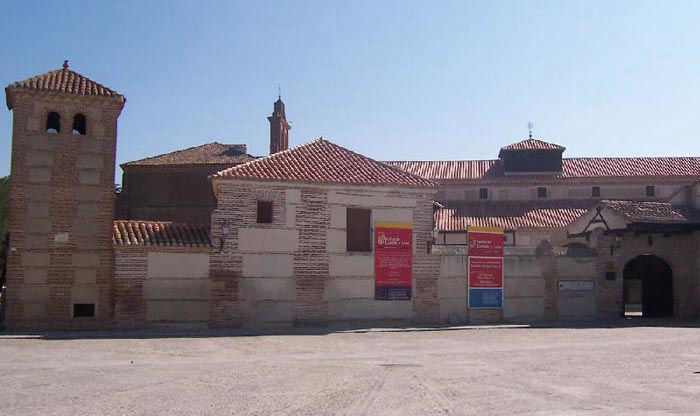
Possibly built on the site of a former mosque, the Convent of Augustinian Nuns was founded in 1509 and can be identified from the surrounding buildings by its brick steeple. The church was built in Gothic style using granite ashlars and only the upper end can be seen from the exterior, with buttresses on the edges. Inside, it has a layout with one single nave. It was built between 1531 and 1535 and its construction was financed by Pedro Dávila. The church was damaged by fire in 1622 and its refurbished vaults date from said year. Its most important work of art is the main altarpiece, which was made by Juan Rodríguez and Lucas Giraldo in Renaissance style and dates from the mid-16th century.
Monastery of la Encarnación
Next section of this audioguide, the Monastery of La Encarnación was founded inside the town's walls in 1478, and as a Carmelite convent it was moved to outside the town in the 16th century. The new monastery was built on land that had been acquired by the Council on what had previously been a Jewish cemetery. On 4 April 1515, the date on which the saint was baptised, the unfinished monastery was opened with four naves enclosing a central courtyard and a cloister with two levels. At the end of the 16th century, the room used by Teresa of Jesus became an oratory and the idea was to build a chapel, which was not opened until 1717. The current chapel of La Transverberación has four main arches and a hemispherical dome.
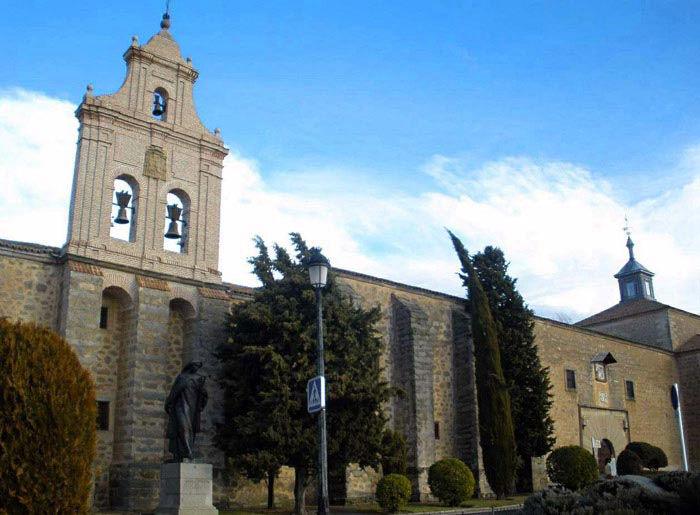
The interior of the original church was changed in the 18th century and adapted to the Baroque style. The building has a Latin-cross layout with one single nave covered by a barrel vault and cupola with scallops and lantern. The altars and altarpieces also boast a Baroque style. The large steeple was built in 1715 and stands out on the south side of the monastery. The monastery is one of the essential places of the life of Teresa of Ávila and was where she lived almost continuously between 1535 and 1574. When Teresa de Cepeda entered the Carmelite Order without her father's permission, the monastery was one of the most popular in the town. It owned a great deal of property and, as in many others, convent life was not strict and there were great social differences between the nuns. In La Encarnación, she was given counsel by Francisco de Borja, Juan de la Cruz and Pedro de Alcántara, and the monastery was where preparations were made for the Reform of the Carmelite Order. The convent is also home to the museum of St Teresa. One of the most interesting pieces in the museum is a drawing of Christ on the Cross by St John of the Cross. It was designated a National Monument in 1983.
Convent of San José
On the outskirts of the town, until it expanded eastwards at the end of the 19th century with the arrival of the railroad, the monastery was made up of a number of buildings that were grouped together to create an architectural unit that has been conserved today next to a small church. The church has now disappeared and was replaced between 1608 and 1615 by another that was designed by the architect Francisco de Mora. He proposed the prototype of the Carmelite church with a longitudinal layout of one single nave facing north-south and three chapels on each side of the nave. The only entrance opens up at midday and the front has been designed in Carmelite style and later reproduced in other churches. The structure is crowned by a triangular front with a large oculus in the centre. It stands above a niche containing the statue of the patron saint in white marble..
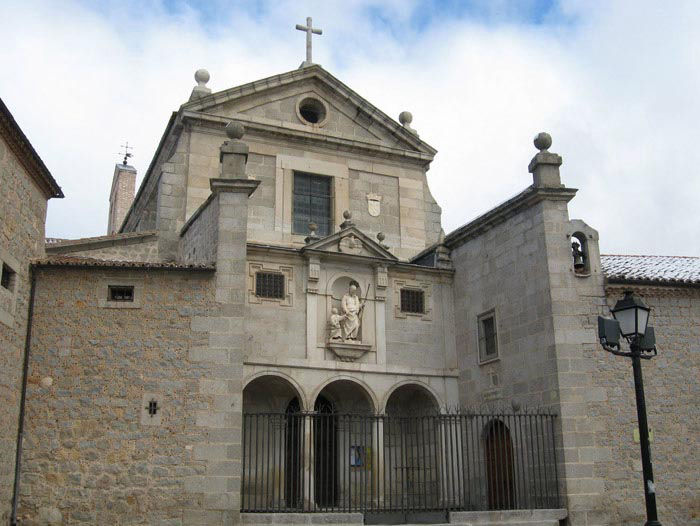
This convent was Teresa of Ávila's first foundation. It corresponds to her monastic ideal and is characterised by its simplicity and austerity. The former convent premises have been conserved so that visitors can imagine what the first convent of the reform and the spirit of the person who was responsible were like: kitchens, refectory, St Teresa's room, cloister, foundational bell and the so-called 'devil's staircase' down which Teresa fell at Christmas time in the year 1577, breaking her left arm. Several of these elements can be seen with the audioguide in the convent museum. It was designated a National Monument in 1968.
Mysticism Interpretation Centre
This is the only centre of its kind in Europe and its aim is to introduce visitors to the phenomenon of mysticism. It stands as a compendium of universal mysticism and a work of mystic art. It is located in a refurbished building outside the walls, very close to the Convent of St Teresa. The size of the building has not been altered; it has a modern look and its most significant feature is the prismatic roof, which filters light through an exterior laminated membrane.
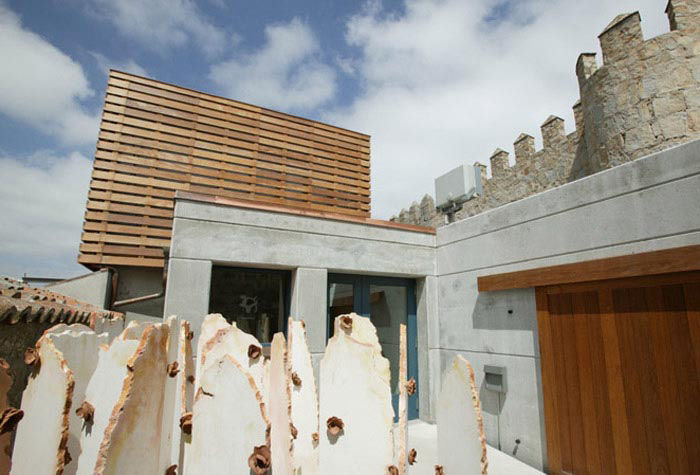
It is separated into four rooms that you can visit with the audioguide, which coincide with the four universal themes into which the creators have divided mysticism: Room 1, tradition; Room 2, knowledge of self, the place for being with oneself; Room 3, enlightenment, that of union with God; Room 4, action, the return of mysticism to the world.It shows the general features of mystic knowledge through symbols placed in the four rooms.
Palace of Núñez Vela
Built inside the walls on the southern face, its construction was ordered by Blasco Núñez Vela, first Viceroy of Peru, around 1541. It was completed in Renaissance style. The front was built in granite ashlar work and the door is a semi-circular arch with large voussoirs. Like the windows, the entrance is framed by thin, plain columns finished off with the family's coats of arms and candelabrum reliefs.
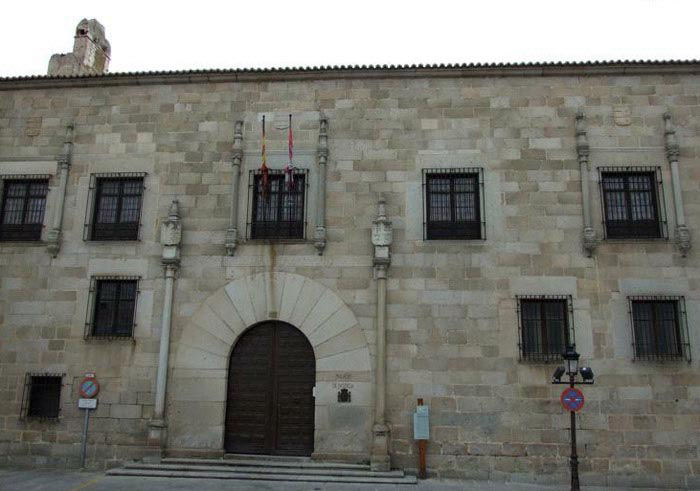
The central porticoed courtyard is lintelled and has a double gallery with Doric columns and capitals with bases; the upper gallery has an elegant balustrade. In 1941, it was used as the Provincial Courthouse, which is also its function today.
Palace of Los Almarza
Today occupied by the community of the Sisters of Mary, it was built in granite masonry work in the 16th century. Its Renaissance front, with details in Gothic style, is of particular interest. It boasts a semi-circular arch with large voussoirs under a window in the shape of an ogee arch with a storiated embrasure. The unit is set in a moulded panel frame and there are coat of arms on the sides. It was designated a National Monument in 1992.
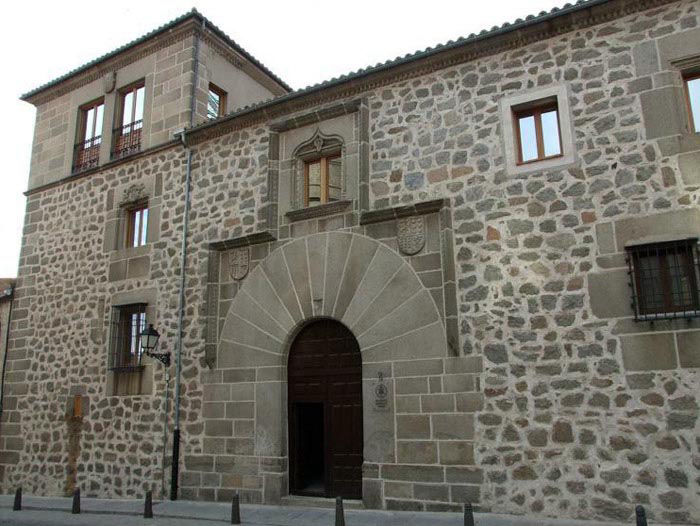
Palace of Superunda
This construction was built in Renaissance style around 1580 by the Alderman Pedro Ochoa Aguirre. In the 20th century, it was bought by the Italian painter Guido Caprotti, who had been associated with the town since 1916.
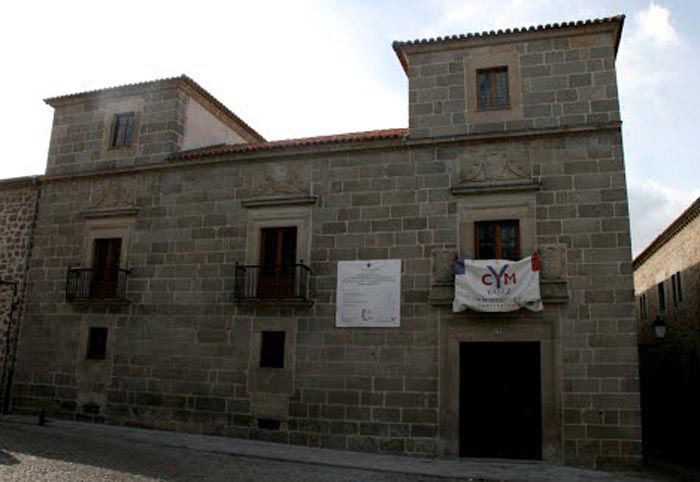
The front is made of granite ashlar work and flanked by two towers. The ground floor has two windows that flank an entrance with a moulded lintel and door posts; and the upper floor has three balconies finished off with coats of arms. Inside, the lintelled courtyard is of particular interest in this audioguide thanks to its simplicity and austere decoration, together with the staircase, which has a bust of Jesus Christ thought to be by Vasco de la Zarza. It was designated a National Monument in 1992 and has recently been restored. There are plans for it to be used as the town's museum, with an exhibition of many of the works by the aforementioned artist.
Palace of Los Dávila
The walls had an interior second line of defence made up of the palaces and mansions inhabited by the nobles and clergy. Built next to the interior of the walls, they assured defence from popular revolts and/or enemy attacks on the town. This is the case of the Palace of Los Dávila, which, built on the south side, is a prime example of a fortified mediaeval palace, as you can see with the audioguide. Built in the 13th century in the same granite material as the walls, different elements were added until the 16th century. The west front, with geminate windows on the upper floor, dates from the 13th century and has a pointed Gothic porch. The front has a second lintelled door from the 14th century.
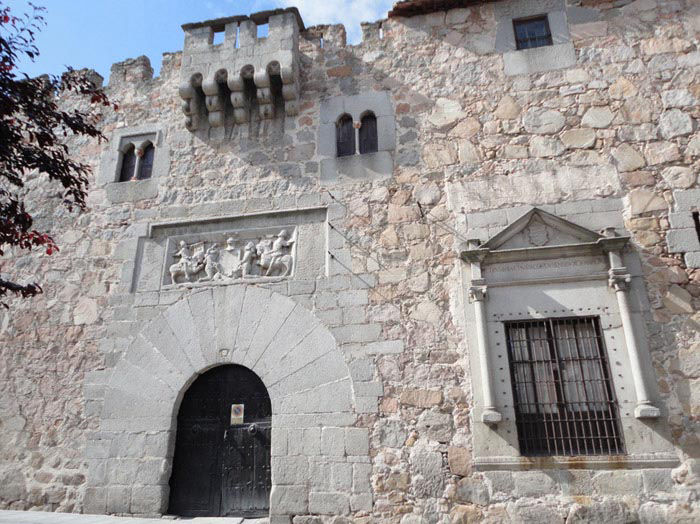
The machicolations and merlons on the north front show how the palace was used for defence purposes. Besides the Gothic-style geminate windows, there are two doors with semi-circular arches and large voussoirs. Above the door positioned furthest to the west, there are reliefs of two wild animals chained and flanked by two knights with trumpets. The building is completed by a Renaissance window from 1541, whose construction was ordered by Pedro Dávila. It is framed by small columns and finished off at the front with the coat of arms of Los Dávila. At the time, the gates in the walls were closed at night. To avoid the prohibition, a door was opened in the walls without permission. After its closure, Pedro Dávila, incensed by the command he had been given, ordered the construction of this window with the legend 'Where one door closes, another one opens'.
At midday, the 16th-century gallery-vantage point that opens on the walls above the Gate of El Rastro becomes particularly interesting. The courtyard, which is home to two Vetton animal sculptures, shows the importance of the Mudejar tradition in our architecture, as in other places inside the palace you can visit with the audioguide.
The Episcopy
Built against the inside of the east face of the walls, the episcopy is a rectangular room with two levels: the lower level is vaulted and the upper level has a wooden roof. Built at the end of the 12th century, it is the only civil building conserved in the town from the Romanesque period. The entrance has a semi-circular arch built of Caleno granite and the same material has been used on the flared windows of the main front. It is municipal property, has now been restored and is used for cultural purposes..
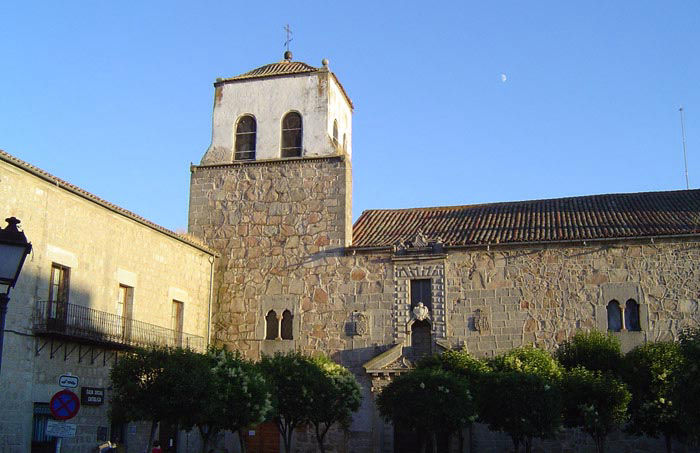
Palace of Valderrábanos
Located in Plaza de la Catedral, it is also known as the house of Gonzalo Dávila. Today, it conserves only its facade, which has interesting figurative decoration, and the main part of the tower, which was transformed in the 19th century. The facade bears the coat of arms of Gonzalo Dávila, Alderman of Jerez de la Frontera; the coat of arms is based on the taking of Gibraltar.
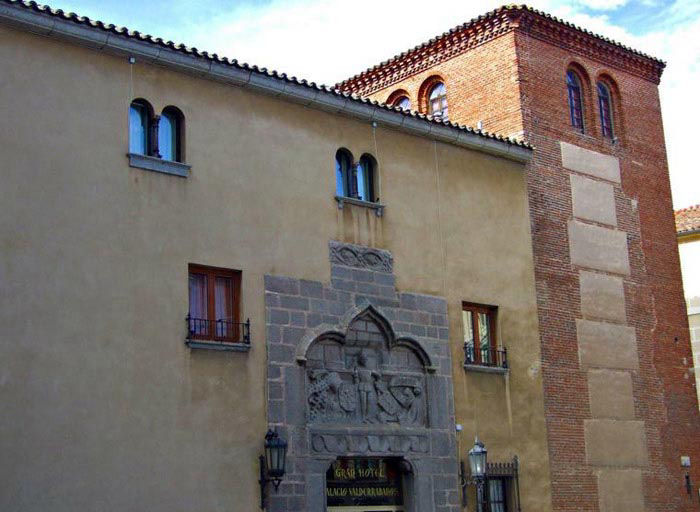
Palace of Los Velada
Built in Plaza de la Catedral, its construction reflects various styles and dates from the end of the 15th-beginning of the 16th centuries. It has a graceful tower built on top of the Palace, decorated with coats of arms on the corners; it also shows evidence of the fact that it once had battlements. The front faces east and the entrance is through a semi-circular arch with large voussoirs under a window in the shape of an ogee arch. The unit is set in a panelled frame. Inside, it has a porticoed central courtyard with three levels, but only the north wing has been conserved; the lower two galleries have reduced arches on Tuscan columns and the upper gallery has lintels. It has been refurbished and turned into a hotel. It is worth visiting with the audioguide.
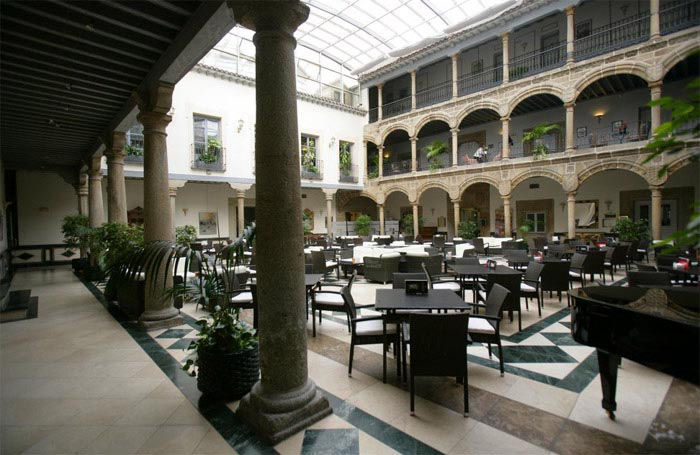
House of Las Carnicerías
Thought to be by Francisco de Mora, it was built between 1590 and 1591 for use as a store for selling the wine that came into the town. It was also used for the two main butcher's shops. The move of the main butcher's shops led to a great amount of protest and they were returned to their original locations after a short period (Mercado Grande and Mercado Chico). In their place, the flour scales (used to control the grain and flower that came into the town) were moved there and remained in operation until the 19th century.
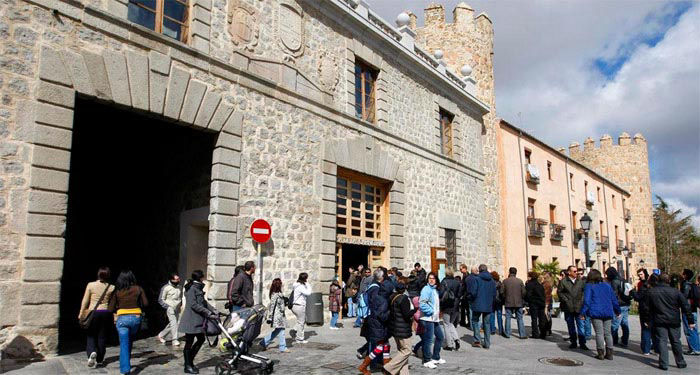
Its construction hindered ordinary traffic through the Gate of El Obispo, especially the cathedral chapter. The complaints led Felipe II to order, in 1597, the bricking-up of the Gate of El Obispo and the opening of a new gate through the House of Las Carnicerías, dividing the building into: one was used as a wine exchange and for the flour scales; and the other was used as an inn for judges and captains. It is currently home to the Municipal Tourist Office and is one of the places where access can be gained to the allure of the walls.
House of Los Deanes
The stately home we can visit with the audioguide was built in the 16th century in a Renaissance style as the residence of the Dean of the Cathedral. It has two floors and a quadrangular layout. In the centre, there is a porticoed courtyard that distributes the space and is characterised by the presence of basket-handle arches made of brick and set on granite columns.
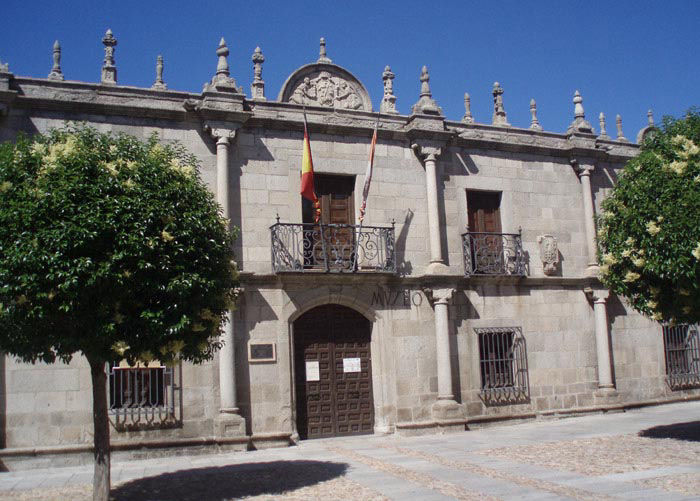
The front is made of granite ashlar work and boasts a Herrerian Plateresque style with a Gothic-Mudejar influence. Two floors were built on columns with bases to achieve the effect of an Italian gallery, all finished off with Plateresque crests comprising semi-circular medallions. The courtyard and the front of the building bear heraldic motifs that correspond to the Cathedral. It was designated a National Monument in 1962 and is currently used as the Provincial Museum of Ávila.
Palace of Los Serrano
Built in a Renaissance style in 1557, this building belonged to the Alderman Pedro Álvarez Serrano. Made in granite ashlar work, it has three floors, which is not common in the town. The main porch is lintelled and faces East. It is framed by grooved Corinthian pilasters and a plain architrave below two lateral coats of arms crowned by candelabrum reliefs and the family's coats of arms set around a central medallion. Inside, it has a lintelled courtyard of which only two galleries remain. It was refurbished as the Cultural Centre of Caja de Ávila (the local savings bank).
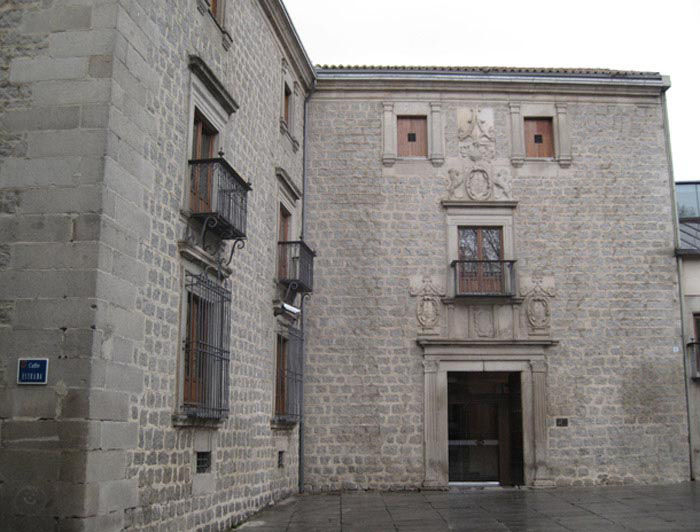
Palace of Los Águila
The construction of this building was ordered in the 16th century by Miguel del Águila. Built in granite masonry and ashlar work, it has an outstanding Renaissance-style front facing south with a lintelled door with corbels framed by slender columns finished off with candelabrum reliefs and coats of arms. There is a balcony above the door, also framed by the same type of columns and candelabrum reliefs. It was designated a National Monument in 1969 and is currently being restored for use as a centre of the Prado Museum in Ávila.
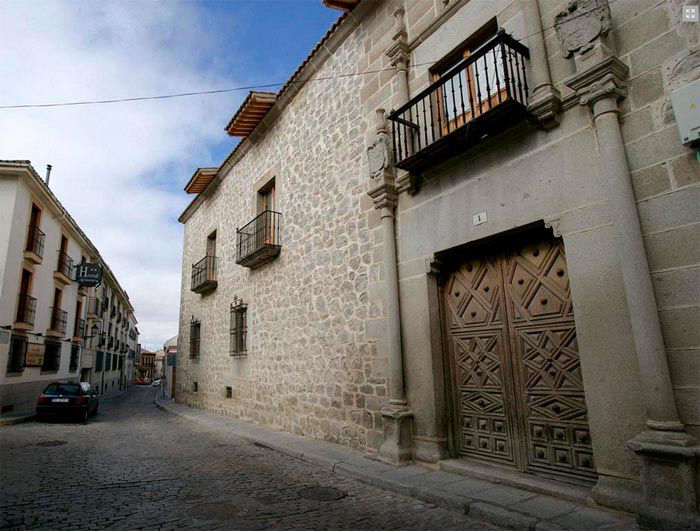
Palace of Polentinos
his complex is made up of the Palace of Contreras, or Polentinos, as the main construction and a number of buildings that have been added over the years (since the installation of the Military Academy in 1875 to when it became a Military History Archive in 1993). It dates from the beginning of the 16th century and is made of granite ashlar work and masonry. The porch is decorated in Plateresque style with military motifs and the courtyard lintels are decorated with medallions.
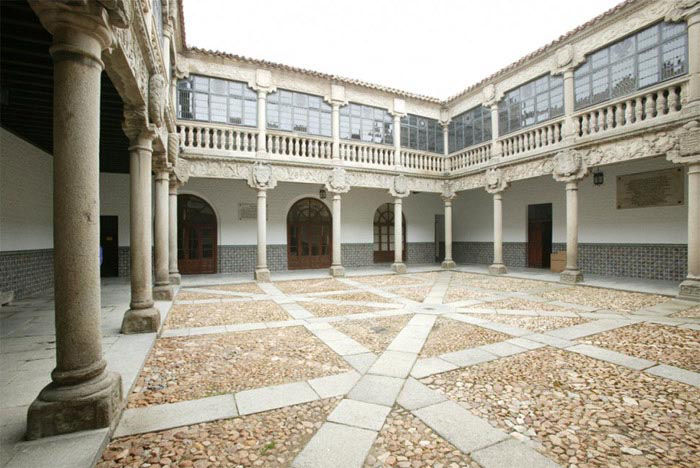
The Palace you can see with the audioguide is set around a quadrangular central courtyard surrounded by galleries and each front has five columns, with monolithic shafts, Doric capitals and bases. The first-floor gallery is made up of shorter columns which also support sculpted lintels and coats of arms. The tributes room is of particular interest, with an important coffered ceiling made of wooden coffers and beams set on carved corbels. Today it is used as the Military History Archive and Army Museum.
Royal palace of Santo Tomás
The Dominican Monastery of Santo Tomás was built under the patronage of Hernando Núñez de Arnalte (treasurer of the Catholic Monarchs), his wife, María Dávila, the Inquisitor Fray Tomás de Torquemada and the Catholic Monarchs. The work began in 1482 and was completed in 1493; however, at the Catholic Monarchs' initiative, a palace was built around the eastern cloister or the cloister 'of the Monarchs', together with the sepulchre of Prince Juan in the church after he had died in 1497. As a see for the Inquisition, the University of Santo Tomás was opened in the 16th century and remained in operation until the 19th century. The monastery has been attacked many times throughout its history: sacked during the French invasion, abandoned after the sale of church lands ordered by Mendizábal and destroyed by fires in 1699 and 1936.
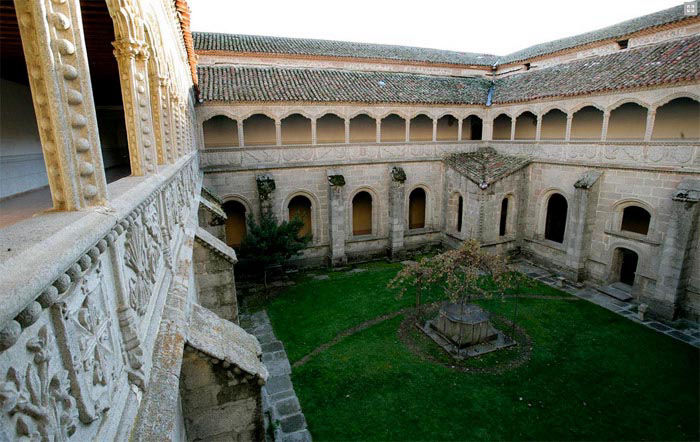
The church front is based on a segmental arch and two buttresses that run through the arch vertically. The subtlety is broken by the existence of a huge rose window and the no less imposing coat of arms of the Catholic Monarchs. The decoration is completed with 10 sculptures by Gil de Siloé. The interior stands out thanks to the elegance of the main nave and the ramifications of the ribs that make up the vault above the transept, marking off the area dedicated to the sepulchre of Prince Juan. The palace is used as an Oriental Art Museum and a Natural Science Museum. It was designated a National Monument in 1931.
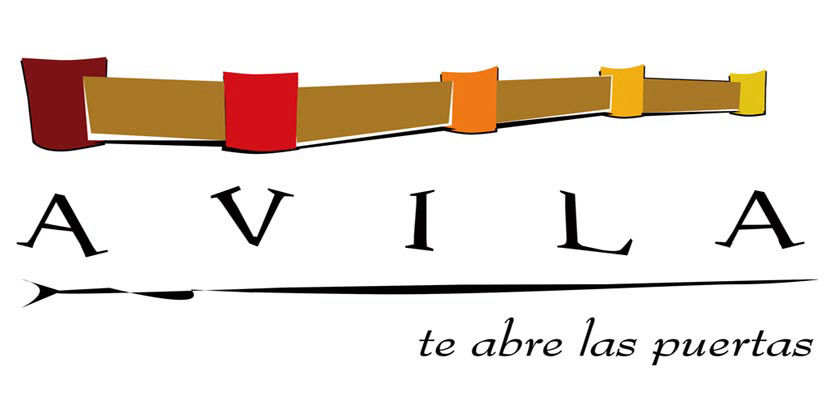
Bluehertz Audio guides has developed for Avila´s town hall an audio guide service available for mobiles and smartphones.
Avila´s Tourist Office address: Avda. de Madrid, 39. 05001 - Ávila.
- Tel.: 920 225 969 - www.avilaturismo.com - turismo@ayuntavila.com -
Back to Index